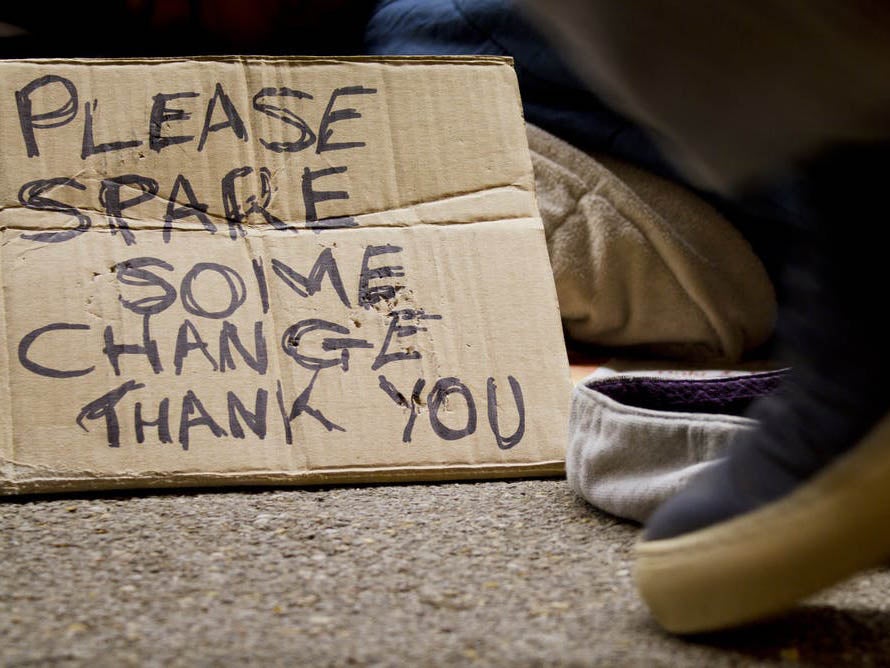How to tackle homelessness, according to the experts
Putting an end to homelessness will be impossible until we understand its true causes. Here's what governments have been getting wrong

The UK is experiencing rising levels of rough sleeping and homelessness. It is not the only nation where this is happening – there are clear parallels in Australia too, and as a UK academic researching homelessness – who recently attended Australia’s National Homelessness Conference in Melbourne – I know both nations must be keen to find an effective response to this extreme form of poverty and exclusion. Answers will remain elusive though, until everyone can understand the problem’s causes.
Policies to end homelessness often focus on halting rough sleeping – just like the UK government’s recent rough sleeping strategy. But the thing about people sleeping rough is they can look, feel and sound different to “ordinary” citizens. And these perceived differences can be seized upon to justify certain approaches to the problem – from punitive to progressive.
US research, investigating how homeless people use services over time, has shown problems such as mental illness, addiction and poor health are confined to a minority of people who experience long term and repeated homelessness. Similar findings have been reported in Australia and the UK.
For instance in England, in autumn 2017, there were 4,751 people sleeping rough, compared with 121,340 children in temporary accommodation, who are also legally defined as homeless. And this does not even account for those who are sofa surfing; who lack their own front door, private space, physical security or any legal right to anything that could be called a home. These people are difficult to count, but studies of the experience of homeless people show us they are there.
Rough sleeping is a relatively unusual form of homelessness in the UK and in Australia.
Not a choice
As homelessness worsens, it’s time to challenge narrow views of the issue, which are driving current social and political responses. Homelessness is not just rough sleeping and it is not just experienced by people with complex needs such as mental illness and addiction.
All too often, sleeping rough is not associated with economic and social causes. Instead it’s widely believed people sleep rough because they’re ill, or because they have “chosen” to be there. The role of low paid and insecure jobs, a welfare system that does not pay enough to live on, domestic violence and, perhaps above all, a lack of affordable, adequate homes often don’t appear in discussions about homelessness.
Yet countries such as Finland, which have extensive welfare, social housing and public health systems – as well as well organised, well resourced and integrated homelessness strategies – do not have rough sleeping, or homelessness more generally, in the same way the UK or Australia do.
The real causes
There’s further evidence the prevailing view of homelessness is distorted. Long term and repeatedly homeless people tend to fall within certain age ranges; they tend to be people who were young during periods of economic downturn – that is, in their 20s and 30s – unable to exit homelessness – and who then are middle aged 20 years later. This challenges the idea being homeless is just down to individual characteristics – if that were the case, you’d expect homelessness to be randomly distributed across age groups.
The causes of homelessness
Show all 7What’s more, the Women’s Homelessness in Europe Network has pointed out a focus on the apparently disproportionately male population of rough sleepers excludes lone women with sustained and recurrent experiences of the problem, who need lots of support but who often sofa surf rather than sleep rough. Most homeless families are led by lone women parents, who do not have severe mental illness or addictions – their homelessness is often associated with domestic violence.
This is not to suggest the individual is not important, or that someone’s needs or choices cannot make a difference on whether they experience homelessness, or how long they experience it for. But ignoring the associations between homelessness and poverty, welfare and health systems, or an inadequate supply of secure and affordable homes will not address the problem.
The bigger picture
Rough sleeping is real. But so too is every poor person and family, living precariously without a settled home – and their numbers are greater. For this reason, rough sleeping should not be the sole target of homelessness policies. Countries ranging from Finland to the US focus attention on sustained and recurrent homelessness – associated with very high support needs – all of whom need assistance, not just those on the street. This includes people who get stuck in what are meant to be short term homelessness services, unable to move on.
Prevention is also crucial and there is scope to build on long standing policies and support the revolutionary changes in Wales and in England which will make prevention much more accessible and extensive. It is critical to ensure there are enough affordable homes, because so much of tackling homelessness is ultimately about having enough of the right sort of housing available to people on low and uncertain incomes.
Governments which focus on rough sleeping and fail to challenge widely held assumptions about homelessness are missing the bigger picture. They do not understand what homelessness really is, the scale of the problem or the day to day realities of homeless people – let alone what we, as a society, should be doing to solve it.
Nicholas Pleace is a professor of social policy at the University of York. This article first appeared on The Conversation (theconversation.com)
Subscribe to Independent Premium to bookmark this article
Want to bookmark your favourite articles and stories to read or reference later? Start your Independent Premium subscription today.

Join our commenting forum
Join thought-provoking conversations, follow other Independent readers and see their replies